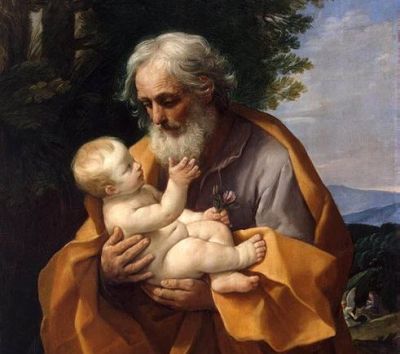One of the most important holidays for many Italian American and Italian Catholics is the Feast of St. Joseph or La Festa di San Giuseppe. St. Joseph, a carpenter, and the foster father of Jesus, is the patron saint of carpenters, orphans and the needy and the homeless, among others. The day has always been celebrated on March 19, but in 2008 it was during Holy Week, and the Vatican changed the day of the Feast of St. Joseph to March 15.
The holiday is especially prevalent in Sicily, where St. Joseph is the Patron Saint of the island. During the Middle Ages, a great drought almost caused a famine, but prayers to St. Joseph brought rain. In gratitude, a feast was held in the piazza for all the townspeople to share. Over the years, the symbolism of the feast was transformed to the altar of churches and then to altars or tables in homes, with food prepared to feed the needy.
Today, many churches, Italian organizations, restaurants, and private homes present a St. Joseph’s Table. The altar is usually three levels, signifying The Holy Trinity. The top level typically holds a statue of St. Joseph, sometimes surrounded by flowers. The other levels may have candles, flowers, figurines, prayer cards, breads in various shapes, breadcrumbs – representing the sawdust of a carpenter’s work – oranges and other fruits, fava beans, assorted desserts, seasonal vegetables, pasta dishes and seafood.
Some altars are quite elaborate with large statues under flowered trellises, fountains and banners declaring “Viva San Giuseppe.” Others can be quite small, tucked into the corner of the dining room, but adorned with a lace cloth, a statue of St. Joseph, and the traditional accompaniments on a smaller scale. It is customary to have a priest bless the table, which assures that prayers to St. Joseph will be answered. In public displays, the food may be auctioned, raising funds to donate to charitable causes or the food may be distributed to the needy.
The festival is especially important in New Orleans, where thousands of Sicilian immigrants settled at the end of the 19th century. Today, it is celebrated with a gala parade by the Italian American St. Joseph Society, and several churches offer open viewings of their St. Joseph’s Altars and free meals to those attending the events.
On St. Joseph’s Day every year another event occurs – the return of the swallows to Mission San Juan Capistrano in California. The mission was founded in 1776 and named for the Franciscan Saint, Giovanni da Capestrano, who took his name from his hometown in Abruzzo, Italy. The tradition of the swallows returning to Capistrano is said to be centuries old, but several legends endure. Among them is the story that the returning swallows were being chased away by a merchant in the newly formed town, and a Franciscan priest invited the swallows to the Mission. Another is in the connection to St. Francis of Assisi, who founded the Franciscan Order in 1209. St. Francis is known for his association with nature; and quite often images show him with birds in the air, on the ground, or perched on the saint’s hand or shoulder.
Every year, the swallows migrate from Argentina and settle into their cone-shaped mud nests under the eaves of the old church. The structure of the church – damaged during the 1812 earthquake – and its isolation offer a safe place for the swallows to nest. It is also noted that the swallows prefer reusing the existing nests, saving the time and energy of building new shelters.
While no one may know exactly the reason why the swallows return to Capistrano, the celebrations at the Mission are numerous with a traditional bell ringing, live entertainment, ethnic foods, and craft vendors all honoring the return of those famous birds to Capistrano.



